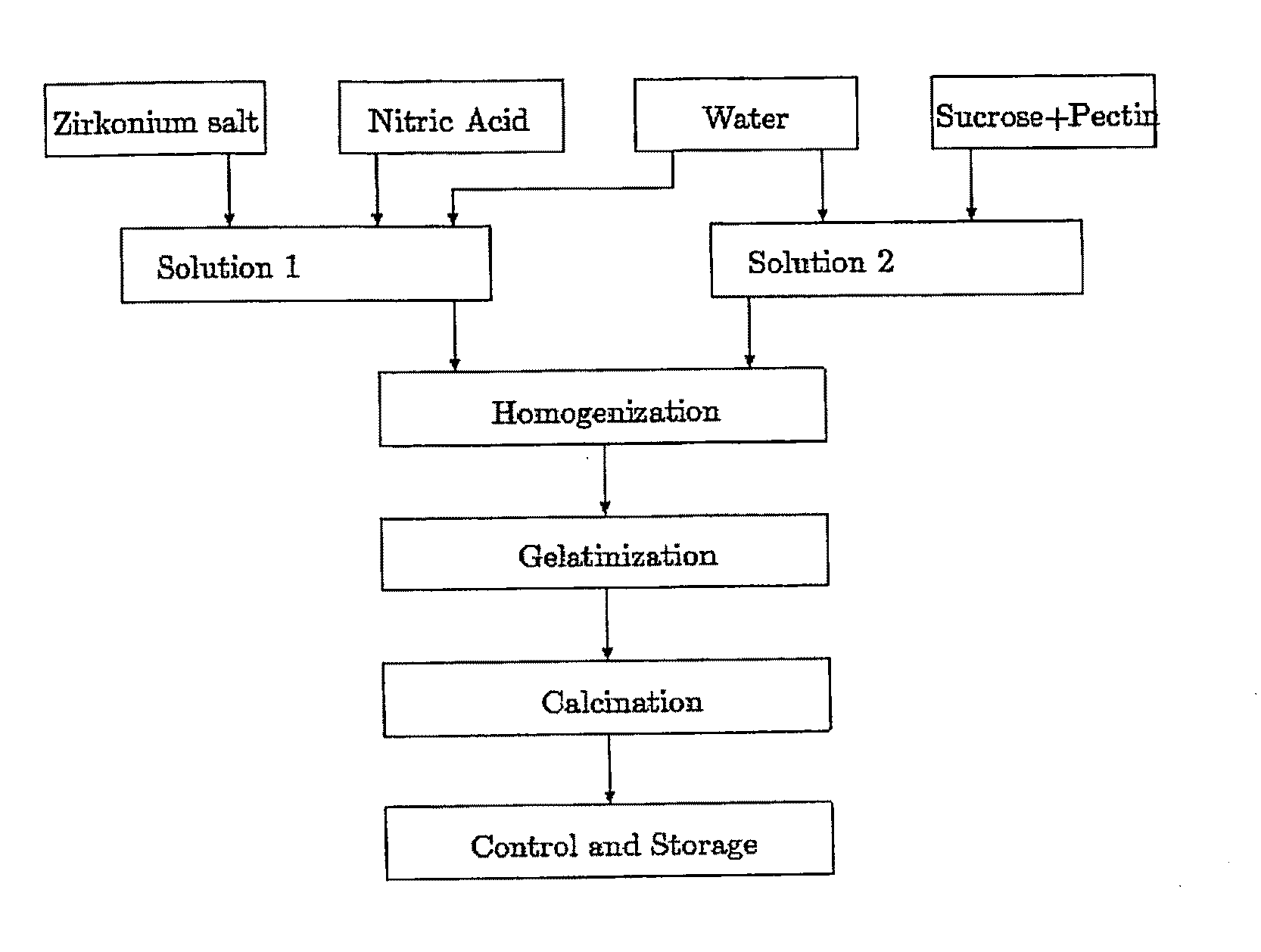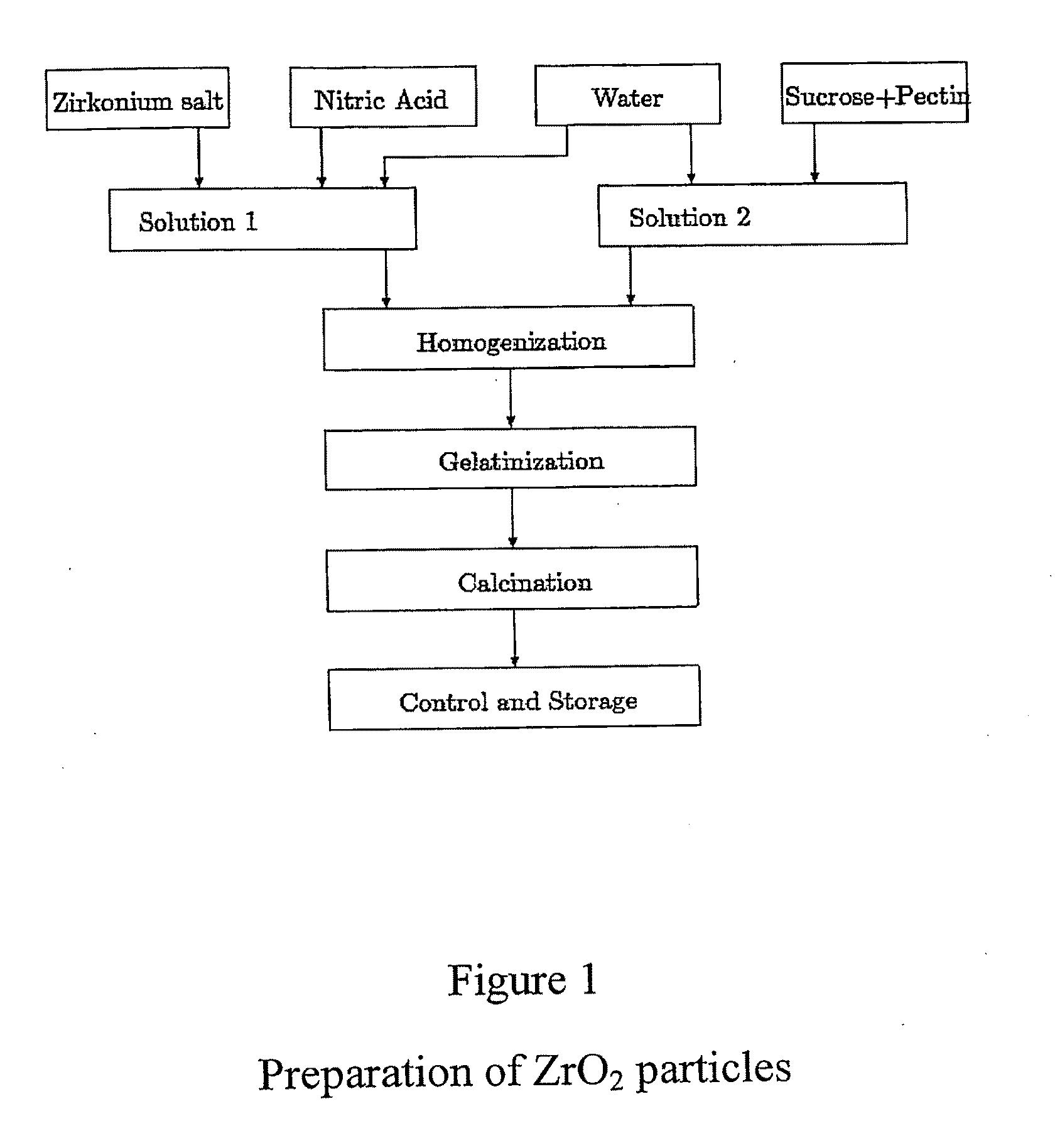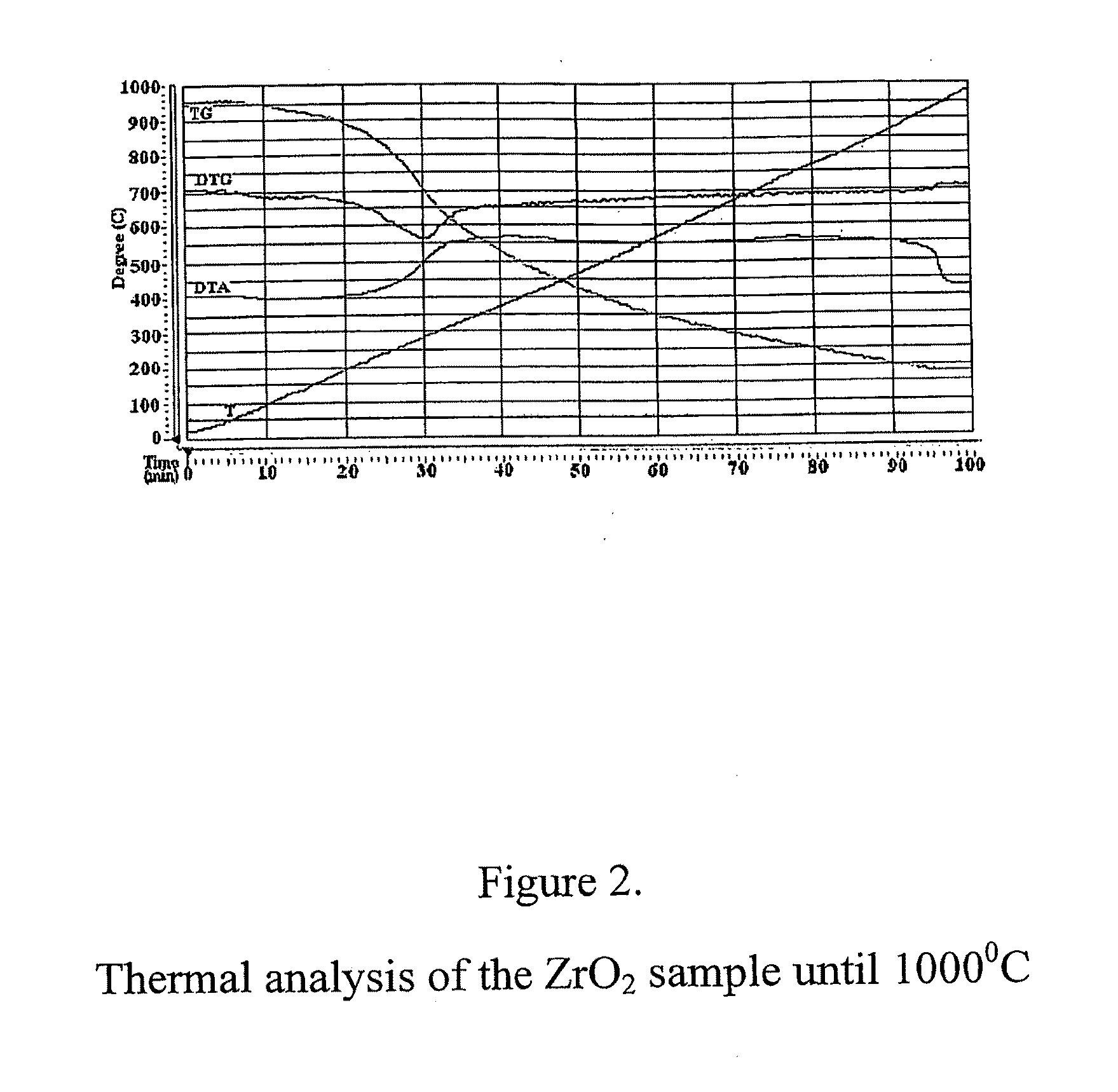Nanoparticles, and a Method of Sol-Gel Processing
a technology of nanoparticles and sol-gels, applied in the direction of silicon compounds, other chemical processes, separation processes, etc., can solve problems such as difficult handling, and achieve the effect of high tunabl
- Summary
- Abstract
- Description
- Claims
- Application Information
AI Technical Summary
Benefits of technology
Problems solved by technology
Method used
Image
Examples
example 1
Preparation of Zirconium Based Sols and Nanoparticles by Using Sucrose and Pectin as Precursor
[0034]Traditionally organic precursors used in the “chemical methods” referred to above are glycerol in the GN method, and ethylene glycol and citric acid in the Pechini method. The inventors of the present invention have surprisingly found that other precursor molecules can be used to obtain the gels and nanoparticles.
[0035]Convincing results have been obtained by using sucrose and pectin as precursor molecules. Pectin can be regarded as a dispersing agent, and we have also shown that the weight ration of sucrose to pectin will influence the gelatinization process.
[0036]Sucrose, C6H12O6, consists of one molecule of glucose and one molecule of fructose. C6H12O6 is the chemical formula for both glucose and fructose, but they have slightly different structures. Table sugar is nearly pure sucrose (around 99% sucrose).
[0037]Pectin is present in ripe fruits and some vegetables. Pectin consists o...
PUM
| Property | Measurement | Unit |
|---|---|---|
| temperature | aaaaa | aaaaa |
| temperature | aaaaa | aaaaa |
| concentration | aaaaa | aaaaa |
Abstract
Description
Claims
Application Information
 Login to View More
Login to View More - R&D
- Intellectual Property
- Life Sciences
- Materials
- Tech Scout
- Unparalleled Data Quality
- Higher Quality Content
- 60% Fewer Hallucinations
Browse by: Latest US Patents, China's latest patents, Technical Efficacy Thesaurus, Application Domain, Technology Topic, Popular Technical Reports.
© 2025 PatSnap. All rights reserved.Legal|Privacy policy|Modern Slavery Act Transparency Statement|Sitemap|About US| Contact US: help@patsnap.com



